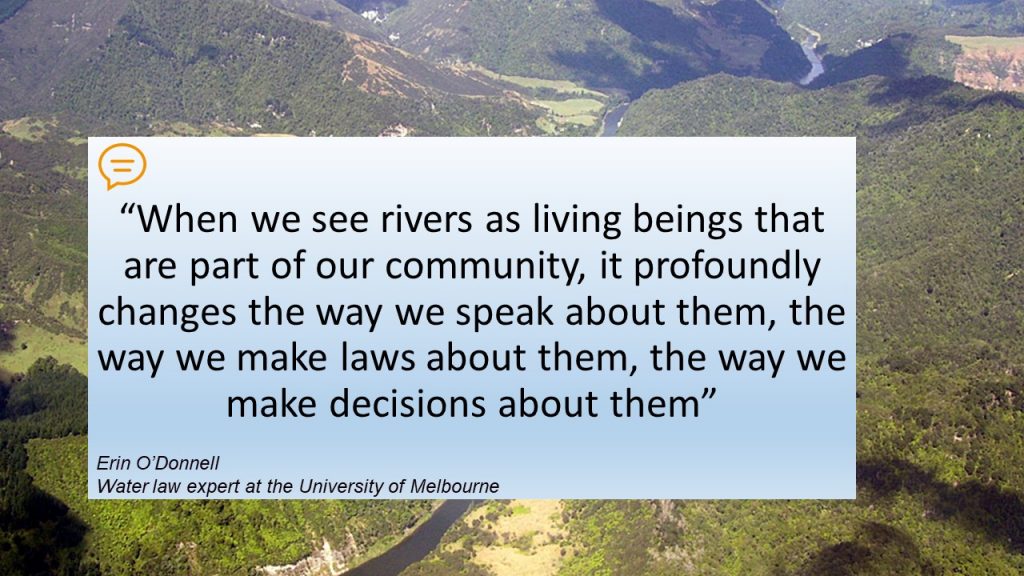3.2.1 Case Study: Whanganui River Legal Status
Course subject(s)
Module 3. Governing the River
The Whanganui River is a major river in the North Island of New Zealand.
In 2017, something unprecedented happened. The New Zealand government granted the Whanganui River legal personhood—a status that is in keeping with the Maori worldview that the river is a living entity. The legislation refers to the river as an “indivisible, living whole,” conferring it “all the rights, powers, duties, and liabilities” of an individual. Under the Whanganui River Claims Settlement Bill, two people will act on behalf of the river and work to promote and protect its wellbeing.

Picture credits: https://commons.wikimedia.org/wiki/File:Whanganui_River_Aerial_Photo.jpg
Since then other countries have followed the fascinating Whanganui’s example. Two rivers in India have been declared legal entities, and Bangladesh gave all its rivers legal rights.
This means a shift in paradigm how we think about rivers and how we should govern our rivers.
In the next section we will have a closer look how practices in river management need to be accompanied by fitting innovations in their governance in order to be successful. An innovation on its own will not work if the support is lacking. Some very suitable innovations can be dismissed, because of this. Creating a governance framework, which supports the implementation of the intervention in its specific context is crucial. This is the real art and science of building a successful room for the rivers program.
The following video explains the process of the Whanganui declaration of personhood. It is important to notice how the governance structure fit the specific context of the Whanganui.
In the video several people speak about what the decleration of legal personhood means. In the end it still remains controversial whether this regulation is a good method for environmental regulation. Some locals refer to the regulation as teethless and others deem it revolutionary. What do you think about this?
Do you think giving a river legal personhood is a good method for river protection?
As pressures on water resources increase, the demand for innovative institutional arrangements, which address the overuse of water, and underprovision of ecosystem health, is rising.
As we have seen above, one new and emerging approach is the use of legal personality to protect water systems in law through the granting of legal rights to rivers. This constitutes a significant development in the fields of environmental law and water resources management, yet little analysis is available of how the approach has been used and applied.
The paper ‘Creating legal rights for rivers: lessons from Australia, New Zealand, and India’ by Erin L. O’Donnell and Julia Talbot-Jones critically examines the new legal rights for rivers using three case studies from Australia, New Zealand, and India.
It shows how legal rights have been created in each case, and the complexity of enforcing these legal rights to protect the rivers. The paper concludes that legal personality could be a useful alternative approach for river management, provided that the new legal rights are given sufficient force and effect.
If you are interested in reading more about giving legal personhood to rivers, check out the following articles on an external website:
1. This Canadian river is now legally a person. It’s not the only one. | National Geographic
2. Should rivers have the same rights as people? | The Guardian

Room for Rivers: Perspectives on River Basin Management by TU Delft OpenCourseWare is licensed under a Creative Commons Attribution-NonCommercial-ShareAlike 4.0 International License.
Based on a work at https://online-learning.tudelft.nl/courses/room-for-rivers-perspectives-on-river-basin-management/.



